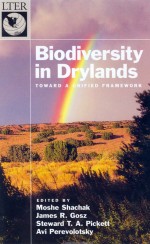"Learning to roll with the punches: Adaptive experimentation in human-dominated systems," a collaborative paper by several LTER scientists, appears in the November 2004 issue of the ESA journal Frontiers in Ecology and the Environment.
The paper is a product of the workshop on the same topic held at the 2003 All Scientists Meeting in Seattle, WA. CAP LTER postdocs William Cook and David Casagrande, along with field project manager Diane Hope, Peter Groffman (BES), and Scott Collins (SEV) tackled the thorny issue of how to incorporate humans into manipulative ecological experiments.
Adaptive experimentation modifies the traditional reductionist approach by incorporating realistic system complexity and involving in situ human subjects. Experiments are devised with the expectation that hypotheses, as well as the experimental treatments themselves, may be modified in mid-course, using the behavior and feedback of the human subjects. However, unlike adaptive management, adaptive experimentation incorporates most of the formal aspects of classic experimental design (e.g. independence of study units, use of replicates, and controls). In the paper, the approach is explained using a real example – that of the residential landscaping experiment (or ‘suburbosphere’) currently being established at CAP LTER, to answer the question “How does landscape type affect a number of key ecosystem processes in a residential urban environment?” This involves the installation of four experimental landscape ‘treatments’ at 24 virtually identical rental homes on Arizona State University’s East campus. The landscapes are designed to recreate the prevailing residential yard styles and methods of water delivery most typical of the Phoenix metro area. Each landscape type will be replicated at six homes and arranged in mini-neighborhoods around an adjacent common area, with an additional six homes and common area being monitored as a control. Monitored variables will include water use, microclimate, insect and bird diversity and abundance, soil chemistry and trace gas fluxes, along with the perceptions and behaviors of the residents living on the experiment.
“Forests in Time: The Environmental Consequences of 1,000 Years of Change in New England” by David R. Foster and John D. Aber, editors. 2004. New Haven, Connecticut: Yale University Press. Cloth, $45. ISBN: 0-300-09235-0. 496 pages.
The book has been reviewed in several publications, notably BioScience Vol. 54 No. 10 of October 2004 and Ecological Restoration Vol. 22 No. 3 of September 2004.
According to BioScience, “Forests in Time discuss the period of New England’s human settlement (first by Native Americans and then by Europeans), the physical environment (soils, topography, and climate), and natural disturbance factors (wind and fire).”
Ecological Restoration stated: “Forests in Time…is really a landmark achievement that brings together a series of important, interdisciplinary studies about the interactive effects of natural and human disturbances on contemporary and future forest composition, structure, and processes.”
Gus Shaver (ARC) and John Magnuson (NTL) were quoted in feature articles in the September 2004 issue of National Geographic. There were several articles in the issue on global climate change and various LTER sites and LTER data sets were important in providing hard evidence of changes in long-term trends.
For more information visit http://magma.nationalgeographic.com/ngm/0409/features.html
Peters, DPC, Pielke RA Sr, Bestelmeyer BT, Allen CD, Munson-McGee S, Havstad KM. 2004. Cross scale interactions, nonlinearities, and forecasting catastrophic events. Proceedings National Academy Sciences (in press).

 Enlarge this image
Enlarge this image